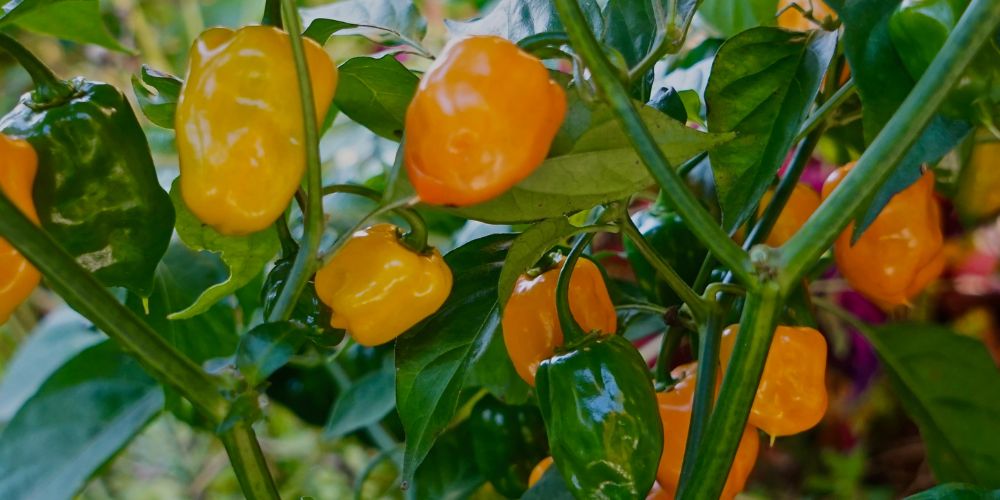Recently, the popularity of hot peppers has increased significantly, because it helps to add spice and a rich taste to any dish. Habanero plants, which are rich in pungency, are in particular demand.

Contents
- 1 Quick facts about hot habanero peppers
- 2 Ability to grow habanero plants indoors
- 3 Time spent growing habanero peppers indoors
- 4 Possibility of year-round cultivation of habanero peppers
- 5 Choosing the right place and time
- 6 Proper care
- 7 Yield indicators
- 8 Harvest rules
- 9 Benefits of habanero plants
- 10 Application in cooking
- 11 FAQ
- 12 Results
Quick facts about hot habanero peppers
Before proceeding to study the question, you should decide on the characteristics of habanero peppers. Habanero pepper plants have fruits that are considered one of the hottest peppers in the world. Until the fruits ripen, a green tint distinguishes them.
When they ripen, the shade changes to red or orange peppers. Brown, white and pink habanero peppers can also be found.
Mature hot peppers can vary in length from 1 to 2 inches. Initially, hot peppers habanero were found only in Cuba; however, they began to be grown all over the world.
The severity of the habanero pepper
Habanero peppers are even hotter than chili peppers. On average, acuity indicators range from 100,000 to 325,000 on the Scoville scale. It is safe to say that these are very hot peppers that not everyone like.

If you compare chili peppers, jalapeños, and habaneros, then the latter is much spicier.
Savina is one of the varieties of habanero peppers. This species used to be considered one of the sharpest, and it was even included in the Guinness Book of Records. However, over time, everything changed, and despite the strong pungency, the variety was excluded from the list.
Ability to grow habanero plants indoors
Habanero peppers are one of the varieties of chili peppers. If you love spicy food and produce, you can take up growing habanero peppers indoors.

However, there are a few rules to keep in mind. If you decide to start growing habanero peppers indoors, you need to provide your habanero pepper plants with enough sunlight.
If there are few sunny days in your area, or if the windows do not face the sunny side, you have to worry about additional light sources.
These can be any lamps that you can afford. It is important to take care of the hot temperature when growing habanero peppers indoors.
Habanero pepper plants prefer to grow in temperatures ranging from 80 to 95 degrees Fahrenheit. You also have to constantly moisten the soil. If you work carefully, you can grow habanero pepper plants.
This allows you to have constant access to spicy fruits, which makes it possible to cook interesting dishes.
Time spent growing habanero peppers indoors
Many people like spicy food. If you fall into this category, then you should get into growing habanero peppers indoors. Be prepared to grow habanero pepper plants for a long time. Ripening takes a long time, and there are no results for the first few months.

Believe me, if you have patience, you can grow excellent homegrown peppers that allow you to cook unique spicy food that is not like other products.
On average, growing a habanero takes at least 2 months. If you provide a habanero plant with the right growing conditions, it is bear fruit for several years.
Habanero cultivation should be carried out in a well-lit area. It is important to provide your plants with enough oxygen, so make sure that the air in the room is well-circulated. Remember to regularly water and fertilize.
Possibility of year-round cultivation of habanero peppers
If you like spicy food, you can get into growing habanero peppers indoors throughout the year. The pepper plant prefers warm climates, so keep it below 60 degrees Fahrenheit. Only in this way is the habanero plant bear fruit all year round.
Choosing the right place and time
Some of the hottest habanero peppers should be planted in the spring. If you’re planning on growing peppers habanero indoors, this factor won’t be as necessary. If you’re thinking of growing habanero peppers in containers, you’ll need to make sure that the habanero seeds get enough sunlight.

As mentioned, this can be done with natural light. To do this, place the containers on a windowsill that faces the sunny side. There should be good air circulation nearby. If there is not enough sunlight, you have to install additional lighting lamps.
Container selection
It is extremely important to choose the right containers in which you grow habanero peppers indoors. Choose containers that have excellent drainage. The habanero plant needs good drainage to keep water from stagnating in the soil.
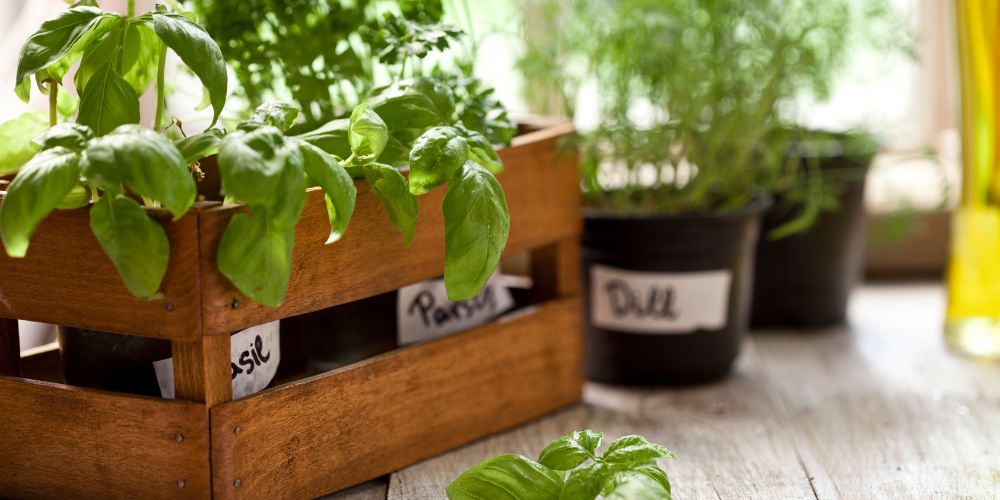
Good drainage when growing indoor habanero peppers are a sure way to prevent root rot.
Use of pots
If you have purchased plants and plan to plant them, you should first harden them off. Choose a pepper plant designed for growing habaneros in containers. A single habanero plant requires a container that is 5 gallons or more.
You can take larger containers. However, you should not take less than this size. After all, the roots do not have enough room to develop, so growing habanero peppers are much more difficult.
Bucket
To grow habanero peppers indoors, you need a 5-gallon bucket. You can find the optimal capacity in any store that sells household or garden products. Growing habanero peppers indoors using a bucket can save you a lot of money.
However, you need to understand that these habanero growing buckets do not have drainage holes. Therefore, you have to make them yourself. Make holes not only in the bottom but also on the sides. This ensures reliable air circulation and excess water drains.
Special growing bags
On the market, you can find suitable bags that are ideal for growing habaneros. These pots are made from cloth and may vary in size. If you are growing peppers habanero indoors, try to find a bag that is at least 7 gallons in size. This provides enough space for the bushes to grow.
The advantage of using a bag is that air penetrates better; therefore, root rot is excluded. The habanero pepper plant receives more moisture and nutrients.
Earth box
The concept of an earthen box refers to a special system that has already been supplemented with irrigation. The size of these containers is so large that you can grow habanero peppers indoors with 5-6 bushes per container. Given that the system is supplemented with watering and fertilizing, you can reduce the amount of time it takes to care for your plants.
Proper planting of a Habanero pepper plant
As you know, to grow habanero peppers indoors, you first need to germinate the pepper seeds. You need to start preparing them a few weeks before the intended planting in a permanent place.
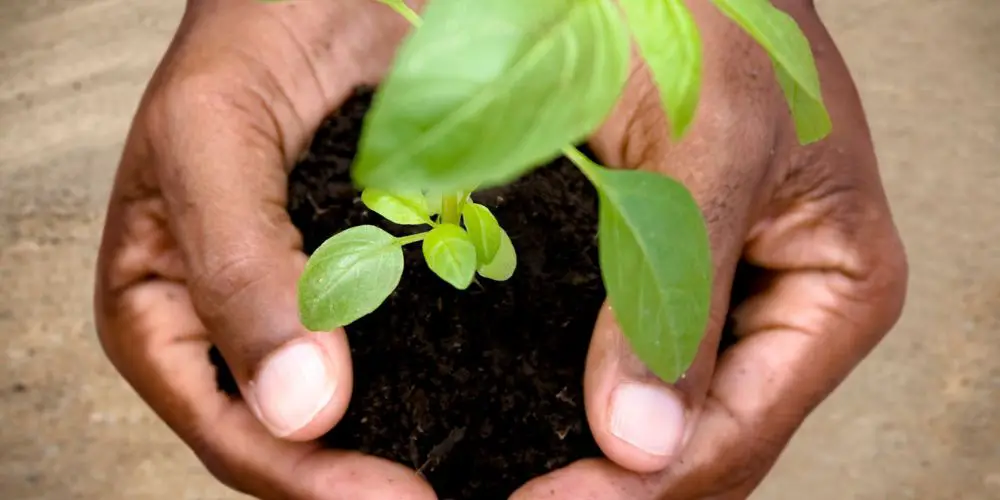
How to prepare habanero pepper seeds properly?
4-5 weeks before you start growing habanero peppers, heat the habanero seeds. If you are not using your seeds but purchased ones, you have to pre-treat them with a fungicide. After that, it is possible to soak the pepper seeds to select low-quality ones.
Those pepper seeds that have surfaced should be discarded. They do not sprout and do not allow you to get one of the hottest peppers in the world. After that, pepper seeds should be laid out on top of a damp cloth, and wrapped in it for several days.
It is better to place the bundle in a warm place so that the seeds increase in size and begin to germinate.
Soil selection for growing Habanero peppers
Habanero peppers need to be grown in fresh soil, which is best prepared in advance. You can buy ready-made soil, or you can start making it yourself. If you are going to produce peppers in the soil making yourself, you have to mix humus, earth, peat, vermiculite, and perlite.
All components are taken in equal proportions, but humus needs to be taken 2 times more. Once the pepper growing mix is ready, you have to sanitize it.
How to sow pepper seeds?
You must warm up the potting soil so that its temperature is around 70 degrees Fahrenheit. After the potting soil should be poured into disinfected containers. Deepen the seeds into the potting soil by 0.39 inches. If you are growing habanero plants in large containers of several, the distance between the rows should be 1.96 inches.
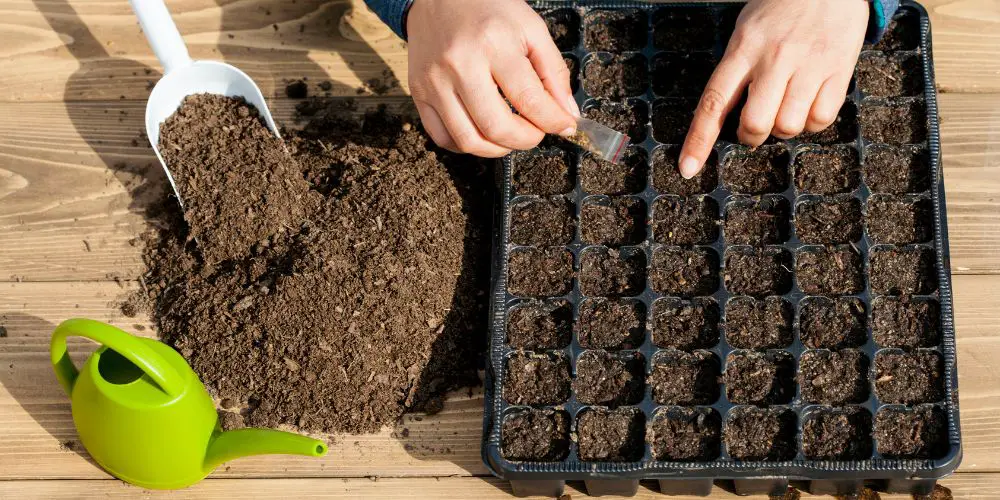
Sprinkle the seeds with soil, and tamp them down a little. Once the habanero plant seeds are in the ground, you need to water them. At the end of the container, they are covered with a film or glass to create the effect of a greenhouse. In a few weeks, pepper seedlings appear.
Proper care
If you decide to grow habanero peppers at home, you need to provide them with proper care.
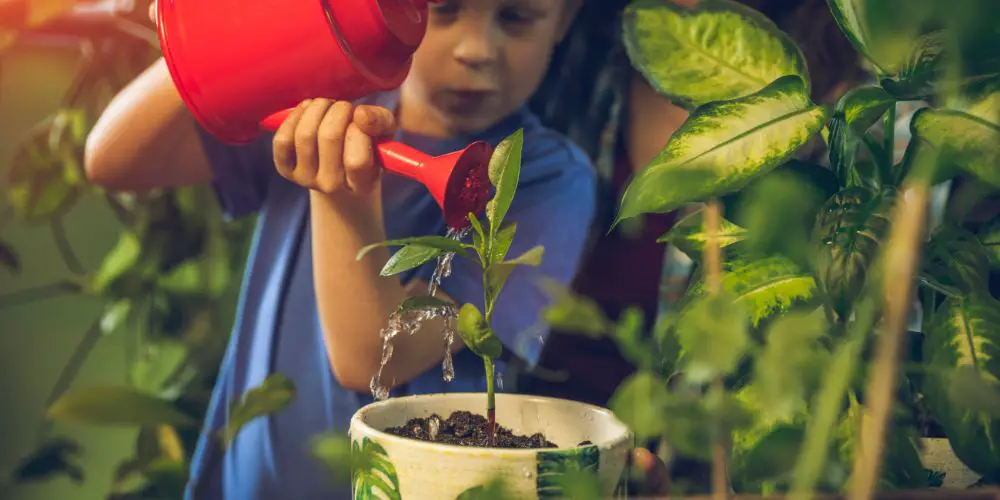
Fertilization
If you are growing habanero plants indoors, don’t forget to fertilize them. It is best to use organic matter, which contains the most nitrogen. The main purpose of phosphate and potassium is to increase yields. Nitrogen encourages vigorous indoor growth of the habanero plant.
Proper watering
Even if the habanero plant is indoors, it needs to be watered. If you are growing habanero peppers in a room, you have to determine how much water you need. Do not water your habanero plants too much, as this can cause root rot.
If you are planting habanero peppers indoors, do not top them up with water. After all, this can provoke side effects, including:
- cultivation of habaneros is too slow;
- pepper plants produce a small crop;
- pepper plants show signs of blossom end rot;
- leaves wilt.
When growing habaneros, water only if the soil is dry. In winter, when moisture levels drop, the frequency of watering can be reduced. If you choose to grow habanero peppers and don’t want the water to evaporate quickly, you can mulch the soil in pots.
You need to understand that when growing habaneros, the frequency, and intensity of watering depending on the containers in which you grow habanero peppers. If you have planted the shrubs in a 5-gallon bucket or bags, water your pepper plants only once a week. Pour water in until it starts to come out of the drainage holes.
Make sure that water does not get on the leaf plates. Indeed, when growing habaneros, the likelihood of sunburn increases. If you are using earthen pots, as mentioned, they come with an automatic watering feature. This greatly simplifies the process of growing habaneros at home.
Lighting
Growing the habanero, which is on the list of the hottest peppers in the world, needs excellent lighting conditions. On average, these plants need 8 hours of light per day. The maximum deviation from the norm can be 2 hours.

Be aware that growing habaneros can cause sunburn. Pepper plants are susceptible to this if they are in constant contact with direct sunlight. Therefore, try not to open the windows in sunny weather.
Identifying pepper scorch that can occur when growing habaneros is fairly easy. The symptomatology is the presence of beige spots that form on the leaves. If you notice these symptoms, you should move your habanero cultivation to the shade. Also, on hot days, you can cover these plants with a sheet.
Temperature
As with bell peppers, habanero plants prefer warm climates. If there are cold temperatures in the room, likely, the bushes do not produce enough crops. In the case of cold temperatures, the bushes may die from frostbite altogether. Therefore, it is better to place potted habanero plants near sources of heating.

Problems in growing habanero peppers
If you are growing habanero peppers for the first time, you may encounter many problems during the growing season.
If you plan to grow these plants, be aware that the bushes can be infested with pests. However, it is not necessary to fight them with the help of aggressive chemical components. You can make chamomile tea or ground cinnamon to treat affected plants.
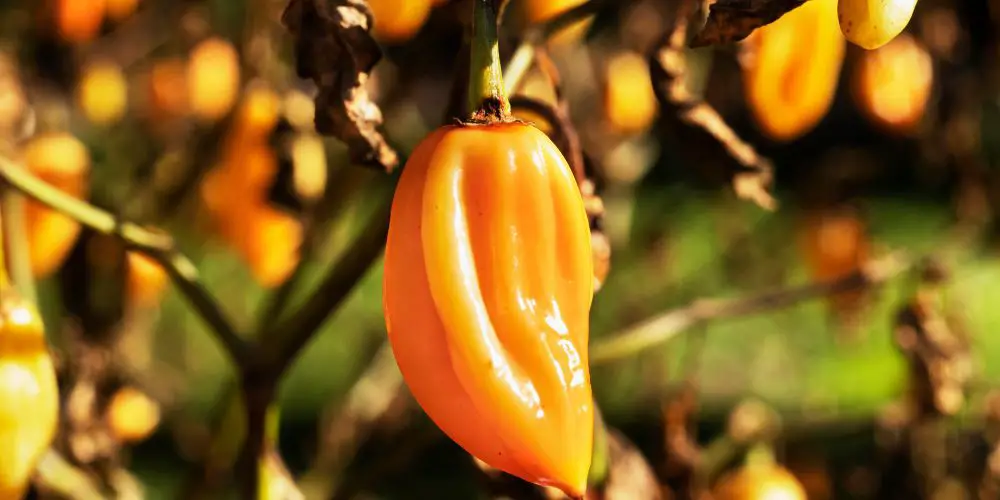
Even if you grow peppers indoors, avoiding pests is quite difficult. Especially if you do not provide optimal conditions for the growth of bushes. If there are too many insects, you can place sticky traps around the perimeter of the room.
Yield indicators
Habanero plants are highly productive. From each bush, you can collect about 20-40 fruits. If the season is good, and you provide the culture with proper care, then the yield of habanero plants increases to 80-90 peppers per bush.
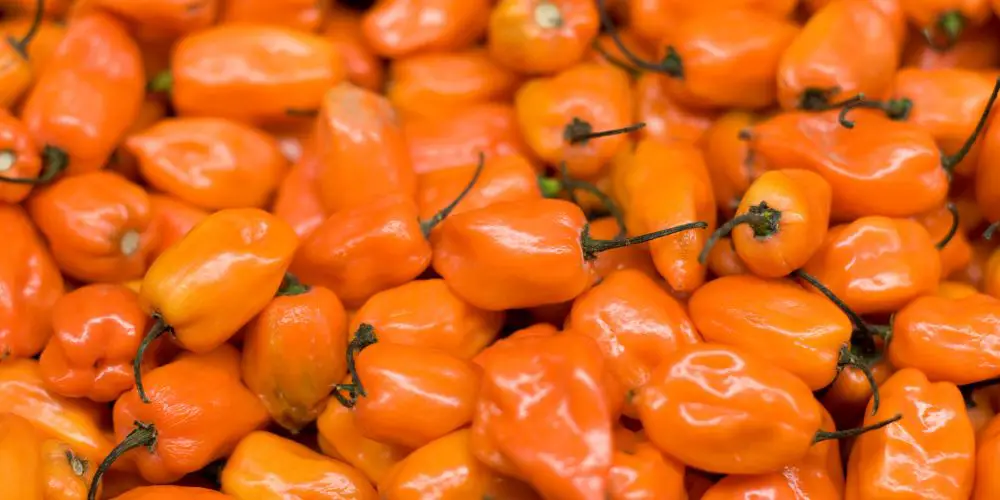
Harvest rules
To collect fresh peppers, and cook a delicious dish from them, you need to work correctly. After all, there is a high probability that you damage fresh peppers. You can harvest when fresh peppers turn green and firm. However, if you want orange or red peppers, you’ll have to wait a bit.

It is recommended to work with scissors. Cut off fresh habaneros at the stalk, leaving about 0.39 in of stalk on the bushes. Put the harvested crop into a container. Try to work with gloves so as not to get a skin burn.
Benefits of habanero plants
Habanero peppers contain capsaicin, which blocks the nerve endings that signal pain. Therefore, the pain decreases. Healthy peppers help fight bacteria and viruses. If you prepare tinctures from pepper, you get an effective remedy for joint pain.

It is believed that this pepper increases male libido. You can use a decoction of pepper to stimulate hair growth. Pepper can irritate the walls of the stomach, as well as the eyes. Therefore, it must be used with caution.
Application in cooking
Habanero plants are in demand because they provide a versatile product suitable for any dish. Enjoy fresh peppers if you like spicy. You can also add it to sauces, side dishes, and pickles. Some chefs include pepper in drinks.

FAQ
When it comes to growing habanero peppers indoors, many questions can be asked. First, I would like to mention that this pepper is the most pungent spice, a type of chili pepper. It is a natural preservative – when added to food, it kills bacteria and microbes and prevents mold from multiplying.
Contains vitamins A, group B, C, E, K, PP, omega-6, omega-3, potassium, calcium, magnesium, sodium, phosphorus, iron, selenium, zinc, and amino acids (glutamine, cysteine, alanine, and others).
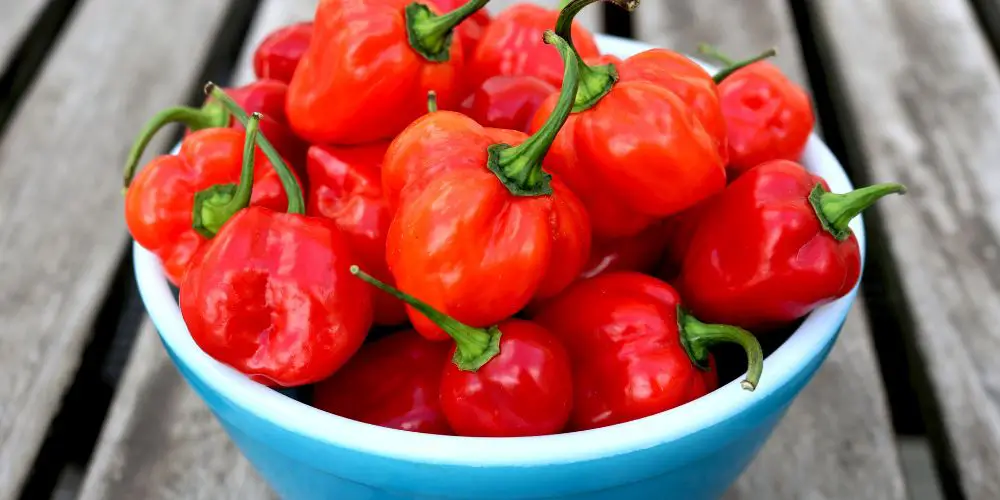
It is used in sauces, meat and poultry dishes, side dishes, and hair and skin masks.
It is used in culinary dishes, making semifinished meat products and poultry, cafes, and restaurants in oriental style, folk, and traditional medicine, and cosmetics (from cellulite, for hair growth).
Can you grow a habanero plant indoors?
Yes, you can grow a habanero plant indoors if you select ornamental varieties of habanero seedlings ahead of time.
How long do habanero peppers take to grow indoors?
It takes at least 3-4 months for the pepper to ripen. If you are growing a crop from seeds, the process is longer.
How much sun does a habanero plant need?
Habanero peppers, like bell peppers, require plenty of light. Therefore, care should be taken to ensure that they receive 8 hours of sunlight per day. If this indicator is exceeded, the leaves can become covered with sunburn, which negatively affects the health of the crop and yield.
Do habanero peppers need sunlight?
Yes, habanero peppers need sunlight. This is a guarantee of proper growth, as well as high yields.
Do habanero plants keep producing?
Habanero plants are perennials, so you don’t have to grow them from scratch every year. The most important thing is to ensure the right conditions of detention.
What are the secrets to growing habanero peppers?
If you decide to start growing habanero peppers, then you should know a few basic secrets that help you get a quality crop. Try to choose a potting mix that does not contain nutrients. Before planting, the soil needs to be slightly moistened.
Plant no more than two seeds per container. The soil should be kept warm, and the crop should be provided with enough light.
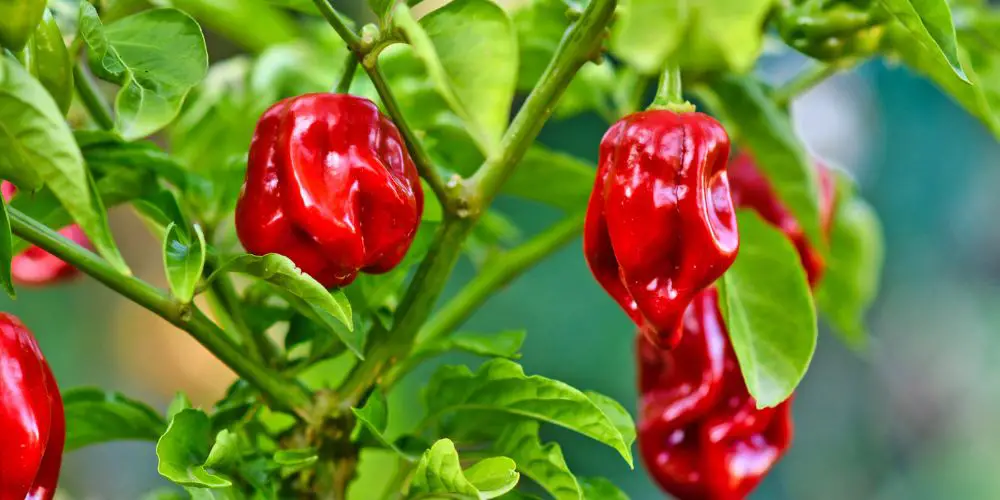
Results
As you can see, growing habanero peppers indoors is not difficult if you know the basic secrets of the work. Only by making an effort in cultivation, you can get a quality crop, and enjoy fresh peppers. You can also experiment with culinary masterpieces.
I sincerely hope that you liked this article and that now you have complete information about this type of pepper. Try growing it, but don’t get too carried away with the tasting. Since too spicy dishes in excessive quantities are not good for our health.
You can also read: How to grow sage from cuttings: everything you need to know

